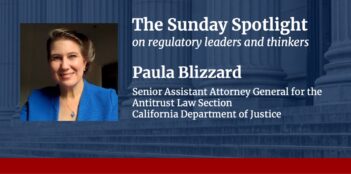
Report finds that large companies are responsible for a large number of wage violations.
For more than 80 years, the Fair Labor Standards Act (FLSA) has provided essential legal protections like minimum wage and overtime laws for workers in the United States. And yet, employers flagrantly violate the FLSA’s wage protections throughout the country.
A recent report by Philip Mattera and Adam Shah demonstrates that all kinds of employers violate federal laws and regulations governing wage standards. Small companies may have difficulty understanding the laws and may not understand what compliance with the laws entail. But Mattera and Shah point out that large companies—from Walmart to Microsoft—are often the culprits, despite the fact that they have legal teams and plenty of resources. For example, Mattera and Shah identified 1,200 successful actions, each with multiple workers involved, against large companies since 2000. In total, these employers paid more than $8.8 billion to the workers they had shortchanged.
Wage theft—including overtime violations, forcing workers to labor off-the-clock, misclassifying workers as independent contractors, and stealing tips from tipped workers—has been a significant problem for low-wage workers for a long time, including for those who work at large companies. Most of these violations happen primarily to low-wage workers who have hourly rates and may not know their rights. Also, wage theft disproportionately impacts women and people of color. Experts have estimated that as much as $50 billion a year is stolen from workers, much of which workers never report or recover. For instance, one report stated that workers only recovered roughly $1 billion each year in 2015 and 2016.
Mattera and Shah’s report demonstrates that many companies treat wage theft as part of their business model. Wage laws can be complicated, and small businesses may run low on money from time to time. But Mattera and Shah argue that large firms with millions of dollars of profit and in-house legal staff presumably understand the laws and can follow them. Mattera and Shah found, for instance, that several of the largest companies with verdicts or settlements against them for wage violations were repeat players: Some of these companies had over 50 cases against them, and one company had over 150 since 2000. As Mattera and Shah put it, “Wage theft may have been part of their business model, but it does not need to be—and should not be.”
In order to encourage employers to avoid violating the law in the first place, workers and the government need strong enforcement mechanisms.
Mattera and Shah offer many policy recommendations for both state and federal legislators to achieve this goal. For example, they recommend dedicating more money to government enforcement of employment laws. Enforcement is currently inadequate, they say. Some states have no wage violation investigators at all, and the Wage and Hour Division of the U.S. Department of Labor has fewer federal investigators than it did in 1948, despite an enormous expansion in the number of workers in the United States.
Governments can also use their resources more efficiently, by targeting particular industries or repeat offenders. Mattera and Shah suggest that enforcement agencies partner with non-profit community organizations to help track down wage violations.
Low-wage workers, who are the most likely to be exploited, have always had a hard time using private litigation, such as the cases that Mattera and Shah analyzed, because they often cannot afford the time off of work that it would require nor can they often raise the money to hire an attorney. Government enforcement instead of private litigation is even more important, however, now that the U.S. Supreme Court has ruled that workers can be made to sign class-action waivers and mandatory arbitration clauses, which will make it more difficult for workers to bring these claims by themselves.
For state governments in particular, Mattera and Shah recommend enacting legislation similar to California’s. California has both enacted stronger wage and hour protections, such as higher minimum wages and meal and rest breaks, and created a mechanism for individuals to bring enforcement actions on behalf of the state attorney general. The California Private Attorney General Act allows individuals to circumvent the mandatory arbitration and class action waiver clauses in contracts and bring suit against employers, while also allowing the state to collect civil penalties.
Mattera and Shah also advocate for workers organizing as another critical method for combatting wage theft. They note that unions several decades ago started the trend of using collective action litigation on behalf of workers—a tool similar to class action litigation where many similarly situated workers can file one suit together. When government moves slowly, Mattera and Shah argue working people “must assert their power in numbers, through a union or other organization that advocates on behalf of working people, to call offending corporations to account.” Mattera and Shah believe that, despite losing the right to bring collective action cases in court, workers still have the power to effectuate change in their own lives.
Mattera and Shah point out the extensive nature of wage violations throughout the country, and that the perpetrators are often large, powerful companies, not just small businesses that do not understand the law. Mattera and Shah argue that without proper enforcement, employers will never feel the need to comply with the law because they will never be held accountable for stealing from their employees. Yet, the report also offers a reminder that workers and the government have the power to turn this trend around and ensure that low-wage, vulnerable workers are protected at work.



